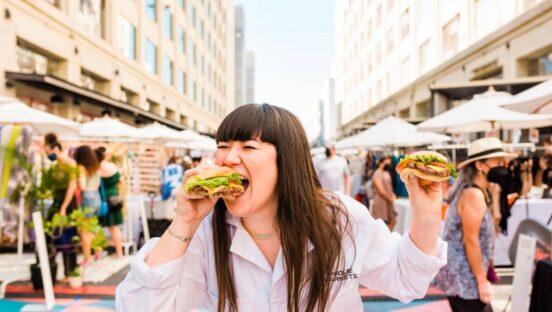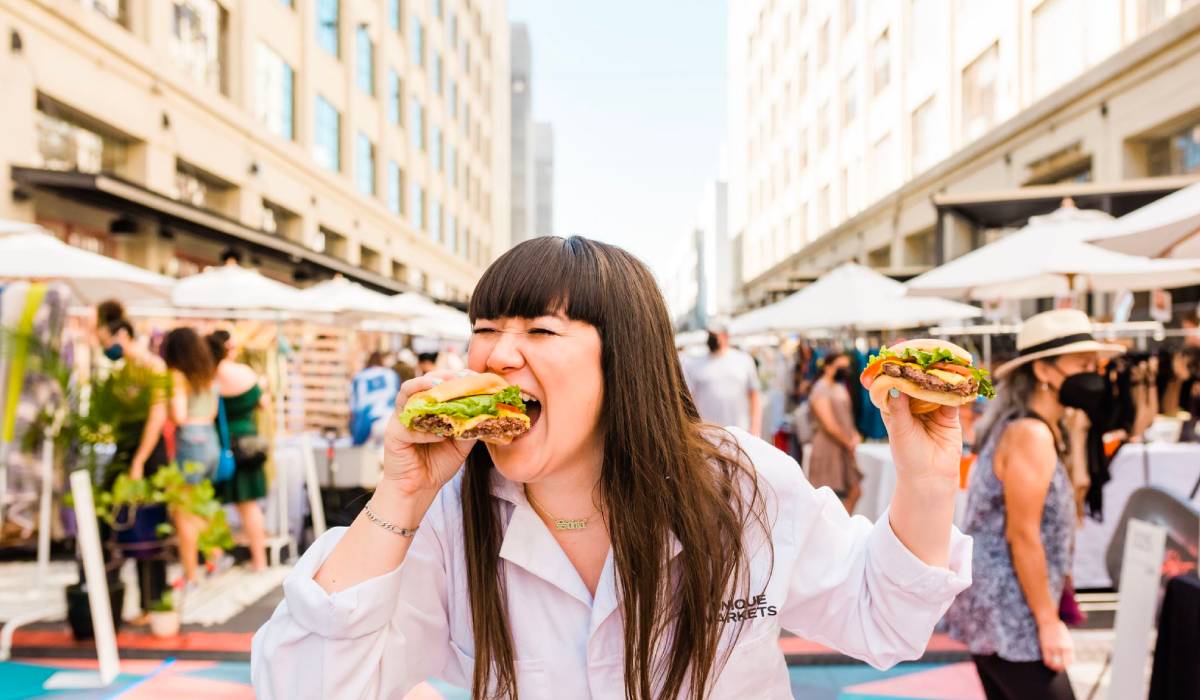Amping up sustainability efforts is, in many ways, no longer an extra consideration for brands, but instead a best practice. Sustainable practices are not only beneficial for the environment, but may also attract consumers, particularly in younger generations—this year, NPD Group reported that 16 percent of Gen Z customers prefer sustainably-sourced offerings in restaurants, as opposed to only 11 percent of older consumers. It’s no secret that future consumers have the environment on their minds, meaning brands need effective ways to implement sustainability efforts into their operations.
But attaining a more sustainable future for the foodservice industry will require more than a one-time, Band-Aid fix. For lasting impact (and customer approval), brands can fight green-washing and ineffective solutions by developing a multifaceted approach that employs a range of strategies. Enter Shake Shack, the New York, New York–based fast casual chain with a diversified plan for boosting sustainability.
“Since day one, we’ve always believed that we should ‘Stand For Something Good’—it’s really our founding philosophy, from sourcing premium ingredients and supporting employee development to deep community investment in the places we serve,” says Jeffrey Amoscato, Shake Shack’s senior vice president of supply chain and menu innovation.
READ MORE:
Is Sustainability the Future of the Restaurant Supply Chain?
Shake Shack’s Big Bet on Drive-Thru is Paying Off
The brand’s most recent “Stand For Something Good” progress report—released in 2022 and covering developments in nearly every area of operations in 2021—details extensive, varied environmental efforts. Ingredients are perhaps the most obvious factor in increasing sustainability; Amoscato says that, over the course of 2021, the brand bought over 50,000 pounds of regeneratively ranches beef, sold more than 150,000 veggie burgers, and piloted the use of NotMilk, a plant-based dairy substitute that acts and tastes like milk, in the brand’s first-ever dairy-free chocolate shakes and custard in select markets. But beyond the category of ingredients, Shake Shack has mined many other sectors of operations for opportunities to go green(er), establishing a range of long- and short-term goals.
One of these short-term goals revolves around packaging, an area that has long been the subject of sustainability efforts, but that became an even more significant area for improvement during the COVID-19 pandemic. During the pandemic-borne influx of to-go orders, single-use packaging elements were more needed than ever before. In 2021, Shake Shack worked to return to pre-pandemic packaging standards.
“Packaging is an area where we’re seeing immediate opportunities,” Amoscato says. “In 2021, we … [achieved a] decrease in the packaging being used to fulfill 72 percent of orders, compared to the height of the pandemic in 2020.”
In addition to hitting pre-pandemic benchmarks for use of packaging elements, the brand explored swapping existing packaging elements with options made of more efficient materials. Previously, Shake Shack’s to-go bags were made entirely of virgin paper, but last year the brand selected a new supplier that offered bags produced with 100 percent recycled fiber and 95 percent post-consumer content. The brand also launched a pilot of compostable, plastic-free, carbon-negative straws and cutlery in select markets. The new cutlery and straws are made of AirCarbon, a biomaterial made by Restore Foodwares that is a regenerative, compostable replacement for synthetic plastic. The pilot began with six locations in California, New York, and Florida; now, more than half of the brand’s units have implemented the straw and the numbers are growing.
A focus on reducing overall cutlery use is also key in the brand’s packaging sustainability strategy. Again taking pre-pandemic metrics into consideration, Amoscato reports that, by May 2022, Shake Shack had reduced cutlery by 13 percent from pre-pandemic 2019 usage.
“We’re constantly exploring, seeking out and speaking with sustainability partners to ensure we can find more ways to decarbonize and make our business more sustainable,” he says. “We plan to pilot a completely new packaging redesign later this year to optimize guest experience, and the materials are completely focused with sustainability in mind.”
While additional packaging improvements are on the docket for the immediate future, Shake Shack is expanding its environmental efforts further with a long-term focus on lessening its overall carbon footprint. Last year, the brand tracked and reported its entire carbon emissions across Scope 1 (direct emissions from owned or controlled sources) and Scope 2 (indirect emissions associated with purchased electricity, steam, heat, or cooling) for the first time. While the chain built its first location with solar panels over 10 years ago in 2012, the data from this 2021 tracking motivated a deeper investment in reducing carbon output.
This resulted in the addition of solar panels to five locations in 2021. Depending on the surface area of the roof at each location, 24-70 panels of varying sizes were installed at each, with the panels generating around 18 megawatt hours of electricity annually per unit. According to figures based on the Environmental Protection Agency’s Greenhouse Gas Equivalencies calculator, the brand’s panels generate energy equivalent to CO2 emissions from over 1,400 gallons of gasoline or 29 barrels of oil, saving the same amount of greenhouse emissions as 4.3 tons of waste being recycled instead of landfilled. In 2022, at least one new Shake Shack will receive solar panels, and additional units (particularly new stores) will be assessed for their compatibility with panels.
“In order to implement solar panels effectively, it is best to incorporate the solar panels in the original design,” says Brian Smith, Shake Shack’s senior manager of procurement and sustainability. “We continue to evaluate the suitability of solar panels as we develop new locations. This allows us to plan for and maximize the efficiencies of the solar array through the design process of newly constructed buildings.”
As is the case with the brand’s overall sustainability plan, Shake Shack’s renewable energy course of action is layered and extends beyond solar panels. In 2021, 30 percent of new units realized a 20 percent year-over-year reduction in kitchen exhaust system energy usage after the brand worked with manufacturers to add floor-to-ceiling side panels around kitchen hoods, containing griddle areas and increasing the efficiency of the exhaust hoods.
And the brand’s heterogeneous approach to sustainability leaves nothing off the table. As new areas for improvement are revealed, Shake Shack plans to continue to respond even, according to Smith, researching developing approaches such as the applicability of geothermal thermal energy to the restaurant environment. Key for brands looking to focus more fully on sustainability efforts is both a focus on immediacy and the patience to support long-term goals.
“Sustainability is a top priority,” Amoscato says. “The food industry contributes a significant amount of global carbon emissions, so as a company … we will keep pushing ourselves to be on the right side of history to build a more sustainable business, even if it takes some time.”







